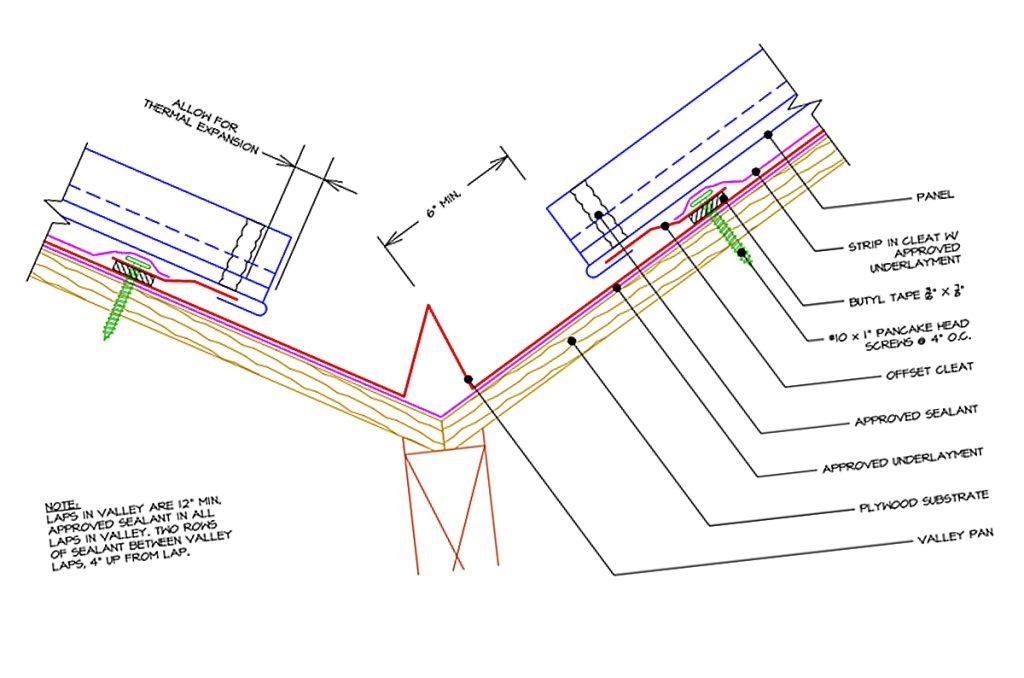When it comes to roofing options, standing seam metal roofs have become increasingly popular due to their durability, longevity, and aesthetic appeal. However, ensuring the proper installation of a standing seam metal roof is essential to maximize its benefits. One critical aspect of the installation process is the eave detail. In this article, we will delve into the significance of a well-executed standing seam metal roof eave detail and its impact on the overall performance of your roof.

Understanding the Eave Detail:
The eave detail is a crucial element of any roof, including standing seam metal roofs. The eave is the lower edge of the roof that overhangs the walls of the building. It is a vulnerable area prone to potential water infiltration and damage if not properly addressed during installation. The eave detail plays a significant role in maintaining the integrity of the entire roof system, especially during heavy rainfall or snow.
Importance of Proper Eave Detail in Standing Seam Metal Roofs:
Preventing Water Infiltration: Water infiltration is one of the most common causes of roof damage. Without a well-designed eave detail, water can seep under the metal panels, leading to leaks, rot, and other moisture-related issues. A correctly executed eave detail includes a drip edge, which directs water away from the roof’s edge and prevents it from getting underneath the panels.
Enhancing Roof Aesthetics: A clean and well-constructed eave detail contributes to the overall aesthetics of your standing seam metal roof. Properly aligned panels and neatly finished edges give your roof a polished and professional appearance. On the other hand, a poorly executed eave detail can result in an unsightly and unappealing roofline.
Ensuring Wind Uplift Resistance: Standing seam metal roofs are designed to withstand strong winds and adverse weather conditions. The eave detail, when done correctly, reinforces the roof’s ability to resist wind uplift forces. Securely fastened metal panels and adequately sealed eave joints prevent wind from lifting the roof and causing potential damage.
Key Components of a Proper Standing Seam Metal Roof Eave Detail
Drip Edge: As mentioned earlier, a drip edge is a vital component of the eave detail. It is a metal flashing placed along the edge of the roof to direct water away from the fascia and prevent it from running back and under the roof panels. The drip edge also provides extra support to the metal panels, helping to keep them securely in place during adverse weather conditions.
Underlayment: Underlayment is a waterproofing layer installed beneath the metal panels. It acts as a secondary barrier against water infiltration and provides added protection to the roof deck. Synthetic underlayment materials are commonly used in standing seam metal roof installations for their excellent durability and resistance to moisture.
Proper Panel Overhang: The correct panel overhang at the eave is crucial for the functionality of the roof. The overhang helps direct water away from the walls and prevents water from dripping down the side of the building. It also aids in keeping the eave area well-ventilated, which contributes to the roof’s longevity and overall performance.
Hiring Professional Roofing Contractors for Eave Detail Installation
Proper installation of the eave detail requires skill and expertise. Hiring professional roofing contractors with experience in working with standing seam metal roofs is essential to ensure the job is done correctly. Professional contractors will follow manufacturer guidelines, local building codes, and industry best practices to deliver a high-quality eave detail that complements the overall roofing system.
Conclusion
In conclusion, the eave detail is a critical aspect of standing seam metal roof installations. It plays a vital role in preventing water infiltration, enhancing roof aesthetics, and ensuring wind uplift resistance. To enjoy the full benefits of a standing seam metal roof, it is crucial to pay close attention to the eave detail during the installation process. By hiring experienced and reputable roofing contractors, you can rest assured that your standing seam metal roof eave detail is expertly executed, providing long-lasting protection and a visually appealing finish to your home or building.



Leave a Reply